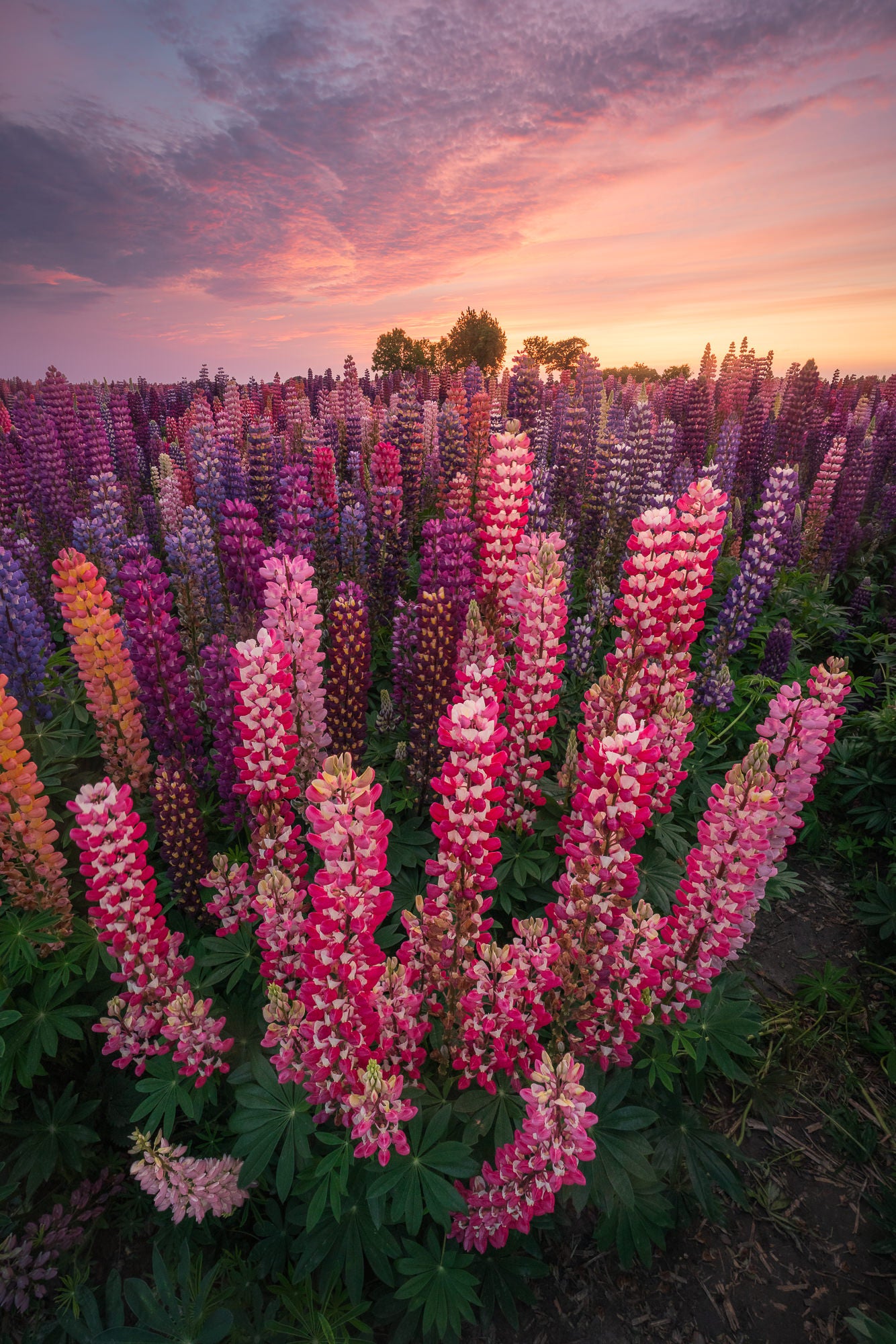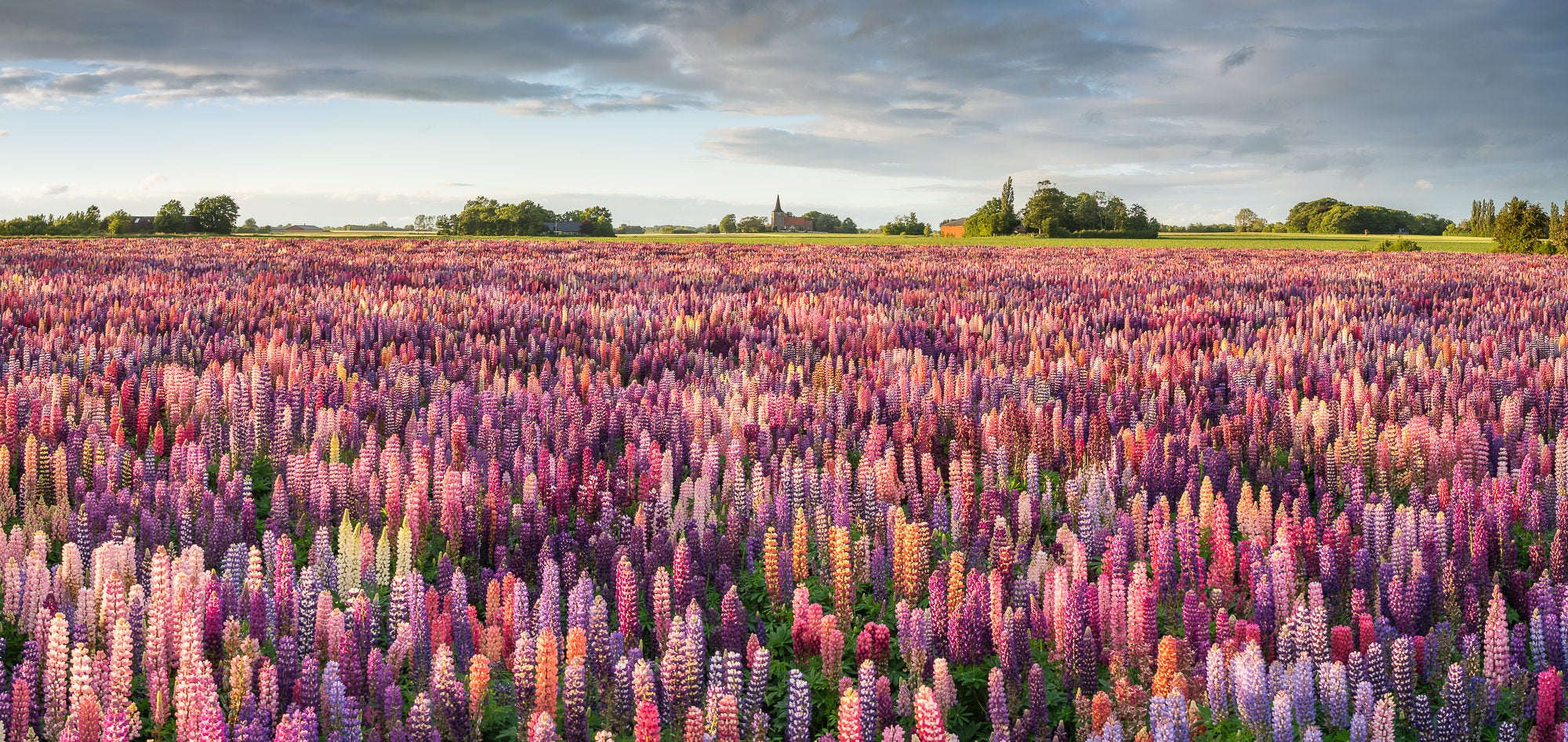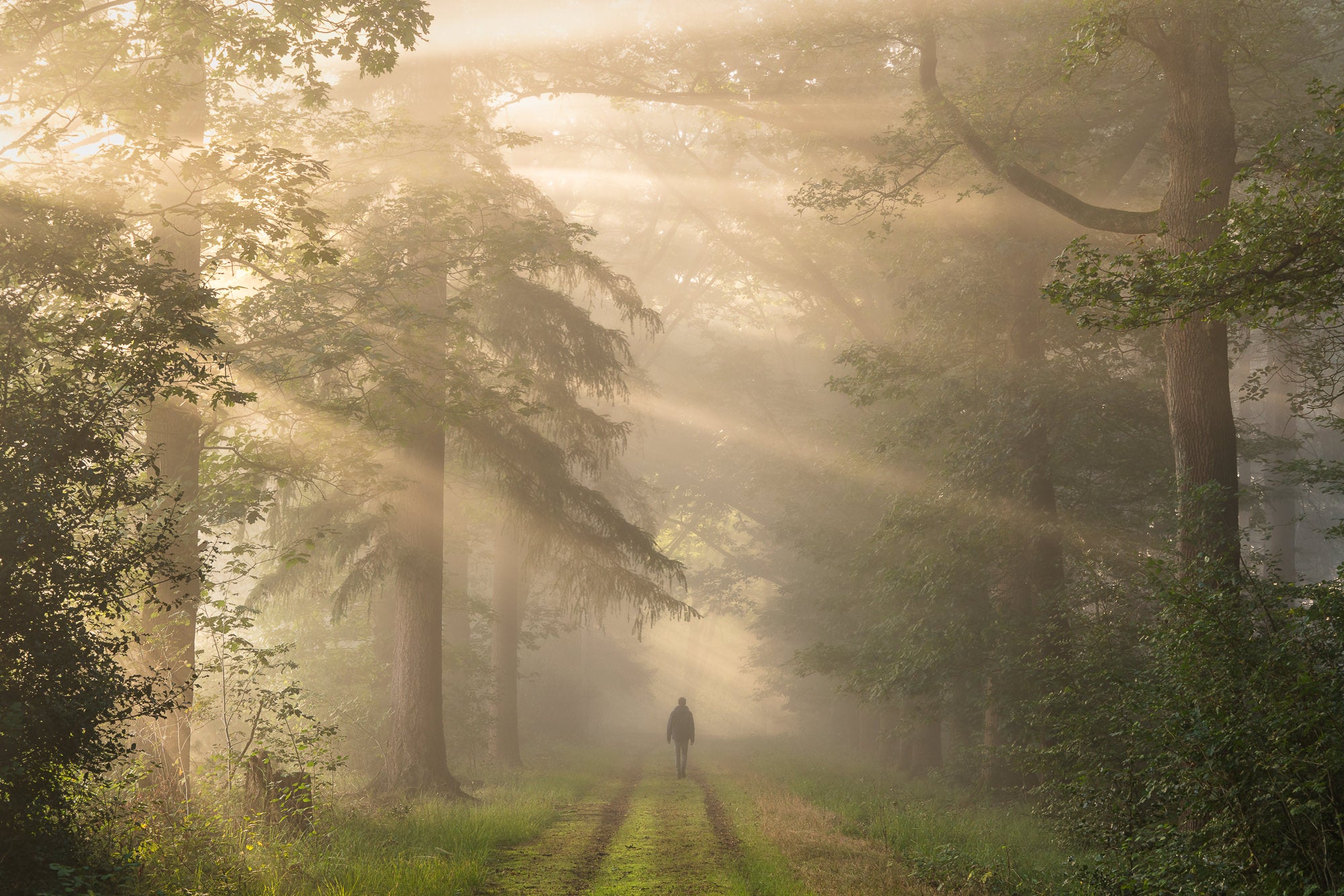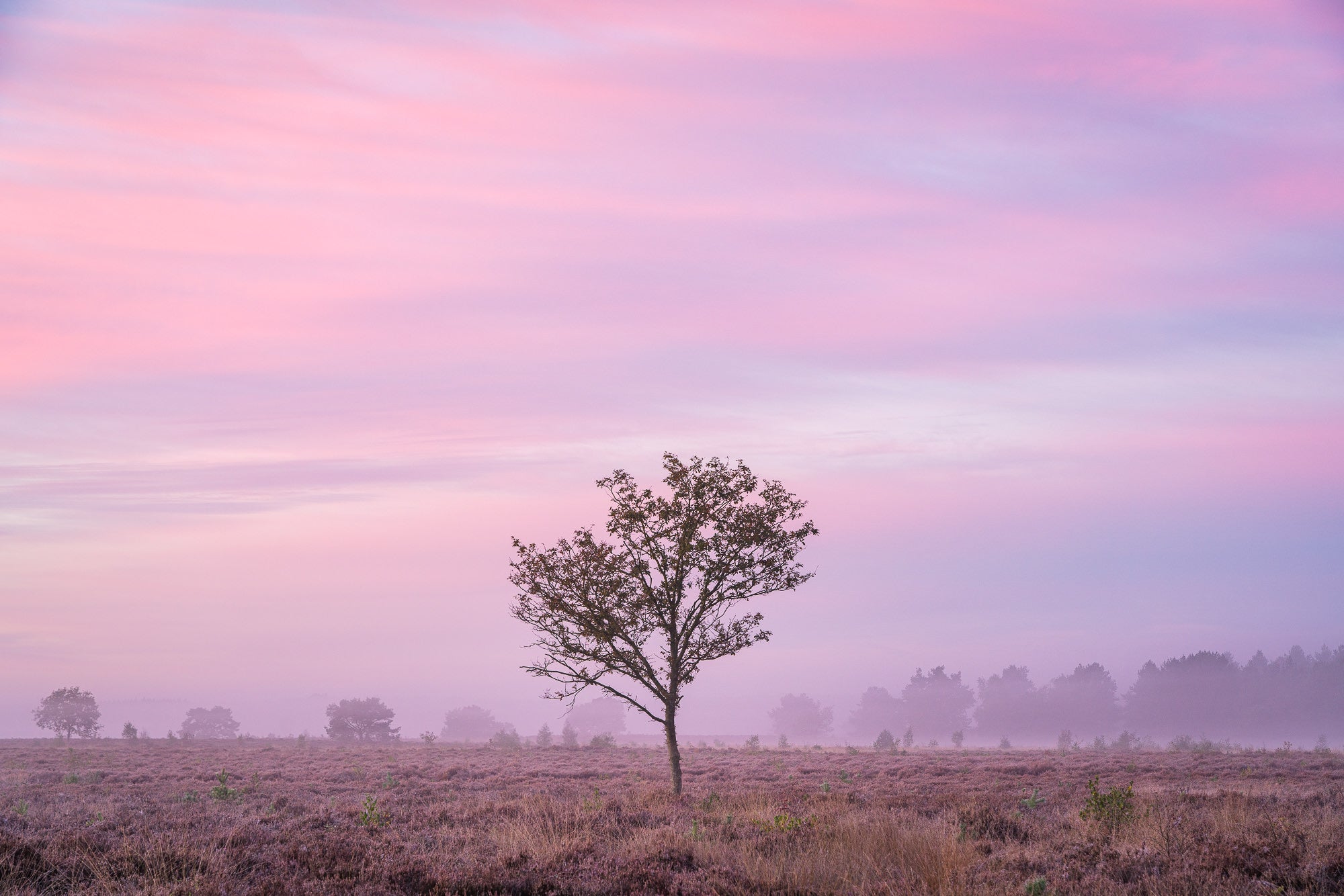Jeroen Schouten (@jeroenschoutenphotography) grew up in the countryside where he discovered both photography and his passion for landscapes. “When the conditions are right you can find me in one of the many forests near my hometown, often early in the morning. Some other favorite subjects include fields of flowers ranging from tulips to lupines, trees, moors and occasionally a cityscape. I always try to capture it during the perfect moment; such as sun rays in a misty forest or a burning sky during sunset." Jeroen has carefully selected his gear for his specific needs. He uses a pair of Sony Alpha full-frame cameras and his own version of a zoom lens trinity that swaps the traditional 24-70mm lens for a Sony 24-105 F4 G. Jeroen takes us through his kit and how he uses it to create decisive moment landscapes.
Product Preview – In This Article You'll Find:
–Sony Alpha 7R III
–Sony Alpha 7 III
–Sony 70-200mm f/4 G
–Sony 24-105mm f/4 G
–Sony 16-35mm f/2.8 G Master
–Sony RMT-P1BT Wireless Remote Commander

Cameras
Sony Alpha 7R III: My main camera is my trusty Sony Alpha 7R III. I bought it a few years ago and the main reason was its 42 megapixel sensor that allows me to have the ability to crop in post, for example when I want to crop it to a 1:2 panorama and still have enough megapixels left. The other reason is that I want to be able to print my photos large whenever the need arises. I sometimes sell my photos so it’s always nice to be able to offer a lot of megapixels to the client. For example, one of my photos was printed and put on a wall with a size of 4.5m x 2.5m (15 feet x 8 feet) in an office. I don’t want resolution to ever limit my work or my sales.

"Lupines are one of my favorite subjects. Luckily, as the sun had just set the wind died down and I was able to take this focus-stacked shot with a reasonable shutter speed. Even at ISO 1600 and after recovering the shadows this sensor delivers amazing results!" Photo by Jeroen Schouten. Sony Alpha 7R III. Sony 16-35mm f/2.8 G Master. 1-sec., f/8, ISO 100 (for the sky). 1/5-sec., f/11, ISO 1600 (5-shot focus stack foreground)
Sony Alpha 7 III: My second camera is a Sony Alpha 7 III. I always carry it with me in my bag as a backup. The two cameras are of the same generation and they look and work almost exactly the same, same button layout etc. This allows me to easily switch between the two.
I once did a trip to Iceland a few years ago when I had just started out as a photographer. It’s one of those must-see locations for landscape photographers. About halfway through the journey my tripod broke and I couldn’t take the photos I wanted to take anymore since most of my shots need a tripod (long shutter speed etc). I learned the hard way that I should always have a backup for all the things I need for my photography. Since that day I always have a spare tripod in my trunk and carry an additional camera with me.

"A panorama shot of a huge field of lupines. As I said, they are one of my favorite subjects." Photo by Jeroen Schouten. Sony Alpha 7 III. Sony 24-105mm f/4 G. 1/40-sec., f/8, ISO 100. Panorama of two.
Lenses
Sony 70-200mm f/4 G: My most-used lens is my telephoto lens. I have been using the Sony 70-200 f/4 for a while now. I love the range of this and it’s perfect for woodland photography to compress the scene. Since I often shoot around f/16 to get everything in focus I don’t need to invest in a f/2.8 lens. The 70-200 f/4 lens is easy to carry around because it is lighter and smaller than the 70-200 f/2.8. This is my go-to lens when it comes to woodland photography. Whenever the conditions are right, such as a foggy or misty morning, I head out to the local forest and I walk around with this lens on my tripod. I rarely switch to another lens during mornings like this.

"Sometimes I’m lucky and find myself in scenes like this. I love the sun rays in this one. I positioned myself in the frame to get a sense of scale." Photo by Jeroen Schouten. Sony Alpha 7R III. Sony 70-200mm f/4 G. 1/10-sec., f/16, ISO 400
Sony 24-105mm f/4 G: The Sony 24-105mm f/4 G is one of those lenses that is truly underestimated, in my opinion. Even though I almost always head out with a certain plan for my photos I sometimes have to adapt to the situation. Having a lens that covers the range between my tele lens and my wide angle lens helps to overcome these situations. I can photograph what I find instead of shooting what I hoped for!
For example, I once headed out to the moors during sunrise to photograph the heather and ground fog. The sky exploded with pink and purple tones so I quickly grabbed this lens to photograph a small tree that was sitting in the middle of the moors. If I had grabbed my wide angle lens the colorful sky would be a much smaller, and thus less impactful, part in the photo. Had I grabbed my tele lens then the tree would not have fit the frame.

"I quickly switched lenses and was able to take this picture while including a big part of the sky." Photo by Jeroen Schouten. Sony Alpha 7R III. Sony 24-105mm f/4 G. 1/6-sec., f/8, ISO 100
Sony 16-35mm f/2.8 G Master: A landscape photographers’ bag couldn’t be complete without a proper wide angle lens. I have had many and eventually settled for the amazing Sony 16-35mm f/2.8 GM. I love wide angle lenses and use them to get up close and fill the frame with a foreground object such as flowers. I sometimes have to focus stack to get everything in focus in the final photo but I try to avoid it whenever possible so it’s less hassle during editing.
In April, parts of The Netherlands’ countryside will be transformed with dozens of colorful tulip fields. I always head out to photograph them and I use this lens. The photo below of a red tulip field during sunset is a perfect example of getting up close to your subject.

"I noticed these showers in the distance and quickly aligned the red tulip field with the clouds and windmill in the distance. It’s such a typical Dutch landscape scene!" Photo by Jeroen Schouten. Sony Alpha 7R III. Sony 16-35mm f/2.8 G Master. 1/50 sec, f/8, ISO 200 (sky), 1/100 sec, f/16, ISO 1600 (foreground) focus stack of two.
Accessories
Tripod: My most important accessory must be my tripod. Almost all of my photos are taken with a tripod. In the forests it allows me to have shutter speeds of up to 1 second; or maybe even more. Also, by using a tripod I force myself to slow down and carefully compose my shots.
Sony RMT-P1BT Wireless Remote Commander: I use the Sony RMT-P1BT remote to take the shot without touching the camera. I find this especially important when using the tele lens on my tripod: Such long focal lengths require the slightest movement before the shot is blurry. A remote prevents that. A 2-sec. or 5-sec. timer is an alternative but it’s harder to time it right, for example when there is a slight breeze that moves the leaves.
ND Filters: Although I don’t use them a lot I always carry a pouch with graduated ND filters with me; except when in the forests. I like to use this because I like to get it right in the field, rather than fix things in editing. The two stop hard graduated ND filter is my most used one.

"Snow is not common in The Netherlands so when it does happen I go out and take photos! This one is close to my home." Photo by Jeroen Schouten. Sony Alpha 7 III. Sony 70-200mm f/4 G. 1/80-sec., f/5.6, ISO 200 + 1/6-sec., f/14, ISO 100 (focus stack)
L-Brackets: Each of my cameras permanently has an L-bracket attached. This allows me to quickly switch between landscape- and portrait-orientation.
Wrist Straps: Each of my cameras also permanently has a wrist strap. When walking around or when attaching the camera to my tripod I put it around my wrist so I prevent it from falling. These are much smaller than the usual neck straps.
Rocket Blower: The rocket blower allows me to remove those pesky dust particles off of my lens and sensor. I photograph a lot on smaller apertures such as f/16. Dust spots *will* be visible with apertures like this so I often try to prevent this by removing them with my rocket blower before I switch lenses or start photographing.
Stay up to date on Jerone’s work by following him on Instagram (@jeroenschoutenphotography) and checking out his website!























